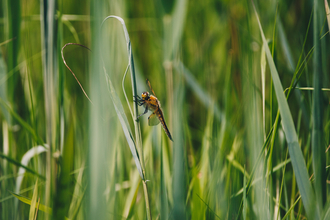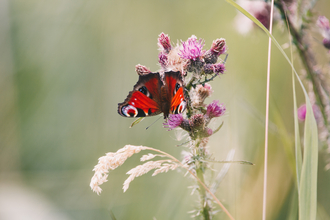
Peatland Code Development
Our commitment to developing a robust code for peatland restoration involves continuous refinement of the Peatland Code. The launch of Version 2 and Version 2.1 marked a significant step forward, and to ensure transparency, we actively engage with relevant parties to keep it fit for purpose. As part of the quality review process, we gather stakeholder feedback through emails, project developer meetings, working groups, partnership site visits, and events throughout the year.
The Peatland Code methodology is reviewed by the TAB, and any necessary amendments or developments are decided by the Executive Board based on TAB recommendations. Detailed information on our decision-making process can be viewed here.
For details on the Peatland Code versions and new requirements under each version we have produced a helpful Peatland Code Version Summary Table.
Peatland Code Working Groups
The Peatland Code Working Groups allow for a wide range of experts to advise on specific topics to ensure the Peatland Code remains accessible and robust. The outputs of these working groups are presented to the Peatland Code Technical Advisory Board and the Executive Board for decision on implementation.
Verifcation Working Group - Applications now open
The first working group series is focusing on Verification and improving the pre-verification survey methodology, including exploring the optional use of drones in the verification process.
We invite interested participants to apply by completing the Expression of Interest form by close of business Tuesday 4th November. This working group will have limited spaces and we aim to send out the terms of reference and meeting invitations to the successful applicants shortly after.
Meetings scheduled:
- Thursday 13th November 9:30 - 11:am
- Wednesday 26th November 12:30-2pm
- Wednesday 10th December 2:00-3:30pm
Quality management
The IUCN UK Peatland Programme is committed to continuous improvement and have established a Quality Management System, aligned with ISO 9001 and ISO 31000 standards, which provides a framework for measuring and improving the process and procedures for the Peatland Code.
The Peatland Code Quality Policy aims to:
i. Ensure that processes and procedure consider risk as defined by ISO31000 and use a risk-based thinking.
ii. Ensure the importance of effective quality management is communicated to the wider team.
iii. Create an environment of continuous improvement through regular annual audits, assessments and following best practice.
This Quality Policy will be reviewed periodically to ensure that it remains current and will be part of the quality document control and revision process.
Minor revisions and clarifications
In addition to version updates, we also implement minor revisions in between changes. These minor revisions are crucial for addressing immediate needs and providing clarity on areas that may be open to interpretation. They ensure that our guidance remains current and relevant.
FIRNS
The Peatland Code in collaboration with the Woodland Carbon Code received FIRNS (The Facility for Investment Ready Nature in Scotland) funding to develop biodiversity crediting for woodlands, peatlands, and other ecosystems. The aim of the project is to align our approach with existing market trends and work with peatland and woodland expects to identify key indicators and metrics that are best suited to measure habitat uplift in UK habitats. We are currently working with a wide range of UK peatland experts, pilot site data, and external data sources to define positive and negative indicators to ensure that our biodiversity metric aligns with real-world biodiversity uplift in the UK.




